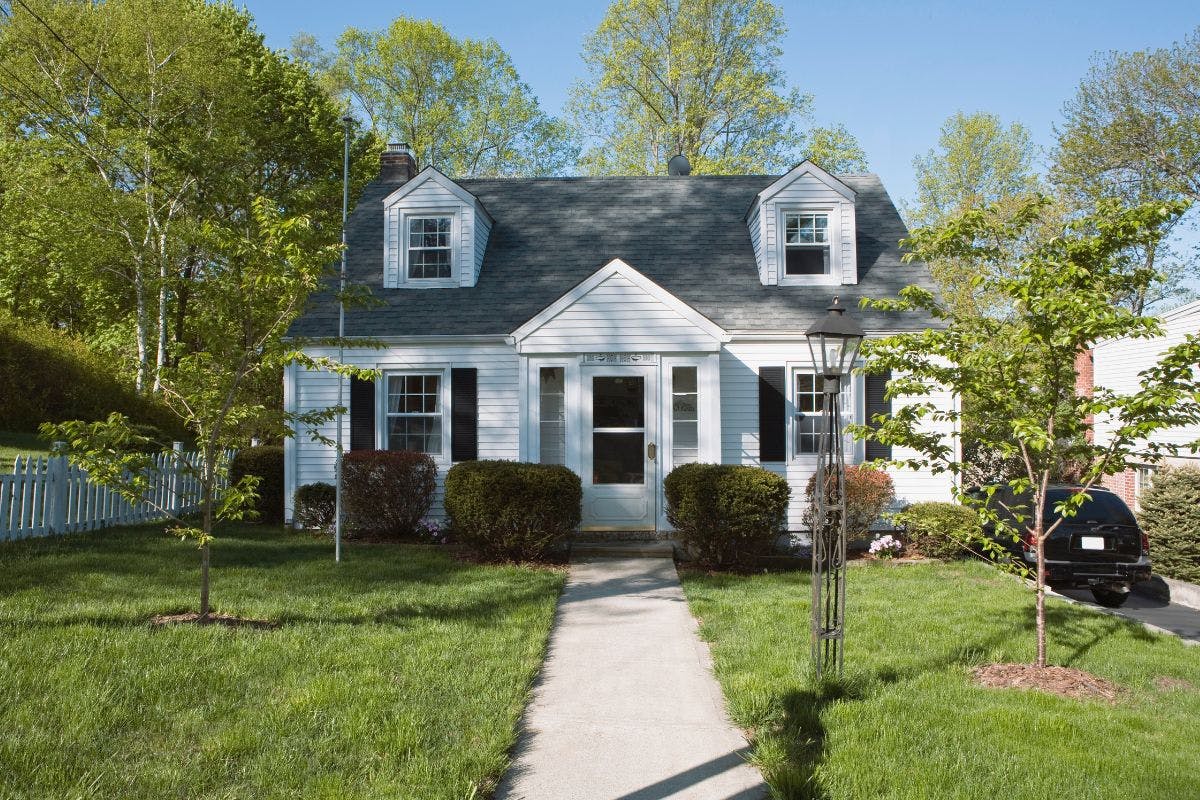The Ultimate Guide to the Tax-Free First Home Savings Account (FHSA)
By Maude Gauthier | Published on 19 Dec 2023

As house prices stay quite high, many Canadians find it more challenging to save for a mortgage down payment. The Canadian government came up with initiatives to make homeownership more affordable. One way the government decided to tackle the housing crisis is through the First Home Savings Account (FHSA) that was put in place in 2023.
The FHSA has many similarities to two existing registered accounts, the tax-free savings account (TFSA) and the registered retirement savings plan (RRSP). Here is everything you should know about the First Home Savings Account (FHSA).
What is the FHSA?
The first home savings account is a tax-free savings account for the main purpose of buying a home. The FHSA is operational since April 2023 and is targeted at Canadian residents who plan to purchase their first home. There are conditions on who can use it and how.
When you contribute to your FHSA, you can invest your money in assets like stocks, bonds, mutual funds, exchange-traded funds (ETFs), and guaranteed investment certificates (GICs). You can get these through online brokers or more traditional financial institutions. The CRA will not tax investment income from your FHSA when you make withdrawals. It is a tax-free account.
Suppose you contribute $5,000 to your FHSA and invest in stocks. If the value of your stocks increases to $10,000, you will make a capital gain of $5,000. This extra income is not subject to tax. The income is safe from the CRA. In addition to having a tax-free savings account, if you contribute to the FHSA, you can claim tax deductions when you file your income tax return, thereby reducing your annual taxes.
Where to open a FHSA?
Effective April 2023, some institutions have been quicker than others to allow you to open your account. By now, most financial institutions offer FHSAs. You can choose to have it managed by a traditional bank or to invest by yourself with an online broker. However, some banks such as Laurentian Bank and some investment platforms still do not offer the FHSA. Below are some brokers that allow you to open an account quickly and start investing your money in just a few clicks.
Questrade
[Offer productType=”BrokerageAccount” api_id=”5f4fc05628fd745eadb16a7e”]Questrade, a well-known online broker for investors who like to save on fees, was the first to offer the FHSA. You can open an account to accumulate your down payment in cash or in various types of investments such as exchange traded funds (ETFs) and stocks through your Questrade self-directed account or in portfolios prepared by Questwealth Portfolios.
Wealthsimple
[Offer productType=”RoboAdvisorAccount” api_id=”5f4fb3d6aa6089772c612036″]Wealthsimple allows you to open a FHSA with a robo-advisor or through direct brokerage. Choose Wealthsimple Invest if you want them to build your portfolio for you, according to your objectives and your timeline. If you prefer to trade stocks and ETFs yourself, consider a Wealthsimple Trade account. It gives you full control over your investments.
CIBC Investor’s Edge
[Offer productType=”SavingsAccount” api_id=”658c68c5a7dca26dc393cb57″]
With a reasonable commission of $6.95 per trade, CIBC Investor’s Edge is an attractive platform to open your first FHSA if you prefer to go with a big bank. Already a CIBC customer? You can easily transfer funds from your bank account. This bank also offers the option to automatically reinvest your dividends.
When to contribute?
To be able to deduct your contribution from your taxable income, you must contribute no later than December 31 of that year. Unlike the RRSP, which allows you to contribute until February 2024 for a deduction applying to the year 2023, the FHSA does not allow you to extend the contribution period.
What is the FHSA contribution limit?
Through the FHSA, you can save $8,000 annually beginning in 2023. Why only $8,000? The FHSA comes with an annual limit of $8,000 and a lifetime limit of $40,000.
There is a significant difference between the FHSA and the tax-free savings account (TFSA). Your unused contribution room to your TFSA accumulates and can be carried forward. This is not the case for the first home savings account (FHSA). You can carry forward one year of unused contribution. For example, if you open an account in 2023 but don’t contribute to it, you can carry forward your 2023 contribution room into 2024.
For example, if you contribute only $6,000 to your FHSA in 2023, and make no contribution in 2024, you would forfeit the $2,000 unused contribution. You can also choose to open an account now, and start contributing later. Let’s say you open your account in 2023, but don’t contribute until 2030. Even if you haven’t used your contribution rights from 2023 to 2029, the amount you can carry forward remains $8,000. In 2030, you can therefore contribute a maximum of $16,000.
Typically, if you contribute your annual contribution limit of $8,000 every year starting from the year you are eligible to open and contribute to an FHSA, you will reach your lifetime limit of $40,000 within five years.
Who can open a FHSA?
If you are planning to buy your first home, you may be able to use the first home savings account. However, you need to check that you are eligible to open and use the FHSA for your home buying goal. There are eligiblity requirements.
What are the eligibility requirements to open an FHSA?
First, you must be a resident of Canada between the ages of 18 and 71 years old. Also, you must not have resided in a home you or your partner own at any time in the year you open your FHSA or during the past four calendar years. Essentially, the Canadian government wants the proposed FHSA to benefit only first-time primary homeowners.
However, you are allowed to open a FHSA now, meet the love of your life later this year and go live with them in their own house. You will still be able to withdraw tax-free money from your FHSA later.
Withdrawing from the First Home Savings Account (FHSA)
If you withdraw money from your FHSA to purchase your first home, you will not pay taxes on your withdrawals. However, if you use money from your FHSA for other purposes other than a first-home purchase, the CRA will recognize your withdrawal amount as income and tax it.
The lifespan of the FHSA is limited. The first home savings account can only be open for 15 years. If you open and contribute to your FHSA but do not use it to purchase a qualifying first home after 15 years from when you opened it, you would need to close your account.
You can withdraw a lump sum amount from your first home savings account and pay taxes on the withdrawal. Another option to avoid any immediate taxation. To do this, you convert your FHSA to a registered retirement savings plan (RRSP) before the end of the year you turn 71. Alternatively, you can transfer the funds in your FHSA through your FHSA provider to a registered retirement income fund (RRIF). It is important to note that the RRIF is intended to provide periodic income in retirement. If you convert your FHSA to a RRIF, you would need to start withdrawing the minimum amount in the following year.
Contribution room consequences
Plus, when you transfer from your FHSA to an RRSP, it doesn’t reduce your RRSP contribution room! Even if you don’t have RRSP contribution room, you can still make a qualifying direct transfer from your FHSA to your RRSP. This is a very strategic move.
However, when you make a withdrawal from your First Home Savings Account or a transfer to your RRSP or RRIF, it does not increase your FHSA contribution room. For example, if you contribute up to the $8,000 annual limit in 2023, but decide to transfer $5,000 to your RRSP, this does not free up any additional contribution room for your FHSA in 2023. Similarly, you can transfer funds from your RRSP to your FHSA tax-free if you have FHSA contribution room, but your transfer will not restore your RRSP contribution room.
The FHSA vs The Home Buyer’s Plan (HBP)
The FHSA is different from the Home Buyers’ Plan (HBP). With the Home Buyers’ Plan, you can borrow up to $35,000 from your RRSP to buy your first home. You to not have to pay taxes on this withdrawal. When you withdraw from your RRSP under the Home Buyers’ Plan, you must repay the amount borrowed within 15 years. However, when you withdraw from the FHSA, you do not have to repay the amount withdrawn.
You can combine the HBP and the FHSA. This is quite interesting, since a couple can raise $40,000 each (FHSA) plus $35,000 each (HBP), for a total amount of $150,000 for their first home.
How does the FHSA compare to a TFSA and an RRSP?
| FHSA | TFSA | RRSP | |
| Purpose | First-time home purchase | General savings | Retirement savings |
| Eligibility | A Canadian resident between the ages of 18 and 71 years old. Not lived in a home you own at any time in the year you open your FHSA or during the past four calendar years | At least 18 years old. Canadian resident | Have earned income. Canadian resident |
| Contribution tax treatment | Contributions are tax-deductible. Investment income and capital gains are tax-free when used to purchase a qualifying first-time home | Contributions are not tax-deductible. Investment income and capital gains are tax-free | Contributions are tax-deductible. Contributions and investment income are taxed when withdrawn |
| Contribution Limit | $8,000 annual limit. $40,000 lifetime limit. Unused contribution room is carried forward for 1 year only. | $6,500 annual limit in 2023. Unused contribution room is accumulated and carried forward | $30,780 annual RRSP limit in 2023. Contribution room is calculated based on your unused contribution room, previous year’s net income, the RRSP annual limit, and other pension adjustments |
| Withdrawals | You can withdraw money from your FHSA for other purposes, but such withdrawals will be taxed. Withdrawals for first-home purchase is not taxed. You can make qualifying direct transfers to an RRSP or RRIF without being subject to tax. Subsequent withdrawals from RRSP or RRIF are taxed | You can withdraw money from a TFSA for any purpose without being subject to tax. No limitations on withdrawals | Withdrawals from RRSP are taxed. You can convert your RRSP to a RRIF or annuity without being subject to tax. Subsequent withdrawals from RRIF or annuity are taxed |
| Timeline | Can only stay open for 15 years from when you open the account. Withdraw funds or convert to RRSP or RRIF when closed. | Can remain open for life | Can remain open until December 31st in the year you become 71. Withdraw funds or convert to annuity or RRIF when closed |
Conclusion
The FHSA is a good thing for Canadians looking to buy their first home. You can use this account to save for your down payment. With a FHSA, you get the tax benefits of both a TFSA and an RRSP in one account. You can claim tax deductions for your contributions, and withdrawals for home purchases are tax-free. The FHSA does not replace the existing Home Buyers’ Plan (HBP). Rather, it provides Canadians with another tax-efficient savings opportunity.
FAQs about the FHSA
Yes, you can open more than one first home savings account, but you cannot exceed the annual and lifetime contribution limits across all your accounts.
No, the FHSA does not replace the home buyer’s plan. The HBP will still be available to Canadians looking to purchase their first home. You can use both to buy your first home.
